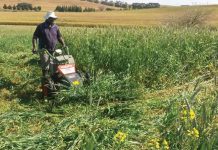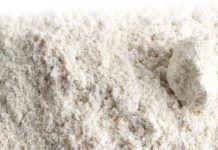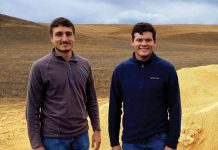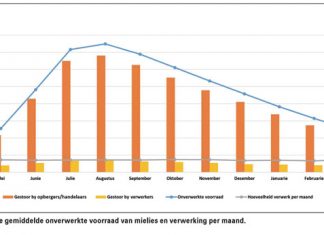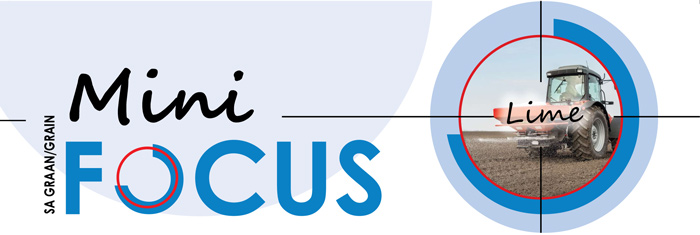

managing director,
SA Lime & Gypsum
One of the greatest opportunities to grow agricultural production, reduce unemployment and accomplish true economic empowerment, lies in the commercialisation of small-scale and subsistence farmers in South Africa. The majority of South Africans are unaware of the massive opportunity we have and the fantastic progress that has been made by the agri industry to change the remnants of the past.
We can argue that it is the responsibility of the government to train and uplift small-scale farmers, but we can also argue that the responsibility is ours, as South Africans, to look after ourselves and our own people.
‘From Subsistence to Abundance’
Grain SA and its members took the second viewpoint five years ago, when they started the farmer development programme. The country currently has 35 000 commercial producers. In 2018 Grain SA’s project ‘From Subsistence to Abundance’, had 5 500 small-scale maize farmer participants. According to project leader, Me Jane McPherson, given the financial backing and building on the solid platform of the past five years, a target of 30 000 farmer participants is realistic in the next few years. However, that is still just the tip of the iceberg as millions of hectares can possibly be available on a national basis.
SA Lime & Gypsum has been privileged to be a partner in this project.
The project’s aim is to help small-scale farmers to use modern farming techniques and knowledge to realise commercially comparable maize yields on their small farms.
Long-term sustainable solutions
Farmers are organised into study groups with mentors and project managers providing weekly and monthly training on best practice maize production. Challenges and plans are discussed and mentors help with advice during the preparation, planting and harvesting periods. The project is not about providing cheap or free inputs, doing the work for the farmers or forcing a quick fix to a deep-rooted problem. The focus is rather on education and training, providing long-term sustainable solutions.
Since 2015, Grain SA has partnered with the Jobs Fund and various industry organisations and input suppliers to help fund the project. A big emphasis was placed on both professional information gathering and reporting systems.
Over the years farmer participation has grown to the extent that new participants have to be turned away every year because the current project structure simply cannot accommodate such large numbers.
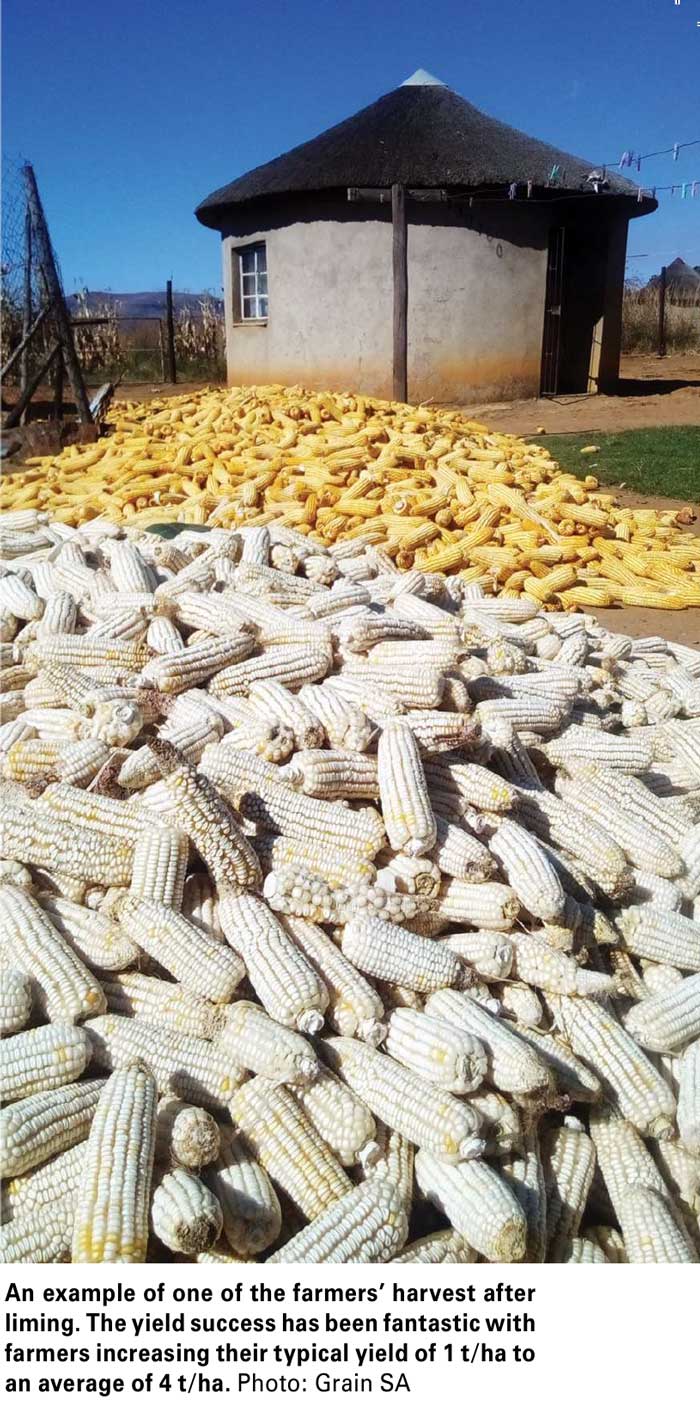 Success
Success
The yield success has been fantastic with farmers increasing their typical yield of 1 t/ha to an average of 4 t/ha.
The project focused on the former homeland in the east of the country, being a high potential agricultural area. However, the high rainfall and past practices in these areas have contributed to soils with a very low pH.
Agricultural lime has been a key component of the planting inputs in the project. In the past, zero liming contributed to the ineffective uptake of plant nutrients by crops, contributing to the poverty trap these farmers find themselves in.
However, liming in these remote areas is a huge challenge. The poor state of vehicle tracks that lead to these small farms makes it impossible for a truck to deliver. As a result, 50 kg bags had to be carried by hand or wheelbarrow, or if available, taken to the farms on bakkies.
The cost of transport to these remote areas and the special packaging requirement make the agricultural lime much more expensive per hectare compared to what commercial producers would pay. To mitigate this cost, only the highest available quality liming material can be used to ensure that the ‘effective liming cost’ is not too high.
Economics
Agricultural lime is the input that is proportionally more expensive in case of small-scale farming compared to the cost per hectare in case of commercial farming.
The following needs to happen to make it possible for small-scale farmers to use agricultural lime:
- Availability at local distribution points.
- Packaging in manageable 50 kg bags.
- Compared to most commercial producers, the cost of transport/distribution and packaging will be high, no matter what product is used. Therefore, it is crucial that only the highest purity, reactive aglimes are used.
Long-term benefits
It would be of huge benefit to the economy if the number of commercial producers on new land could be increased. If this project continues to grow and receives the support it deserves, the long-term benefits are obvious:
- Educated farmers will be more effective and obtain higher yields.
- The families generally use 1 ton of maize per year for own consumption. This means that three additional tons of maize would become available to sell as is or to be further processed and sold as flour.
- With higher maize yields the dry feed available to cattle also increases and makes it possible to increase herd numbers.
- Increasing the income potential of the rural areas means less dependence on income from the cities.
- Keeping young people on the farms instead of them going to cities for work, benefits the social structure of the area.
- Children who grow up on small farms and who later receive proper training in farming practices, will have a good chance of becoming commercial producers. The next generation!
New partners
Regrettably formal notification was received during the 2019 NAMPO week that the Jobs Fund no longer had the mandate to support this project. This will cause a huge funding shortage.
Fortunately, Grain SA’s team has indicated that they will find new partners to help fund the project. As an industry partner, SA Lime & Gypsum fully supports this view. We believe that agriculture is such an important part of our DNA as South Africans and that the fundamentals of ‘From Subsistence to Abundance’ resonate with so many other sectors of our economy.
Now is the time for the agricultural industry to form new partnerships and take this project to a totally new level.
Go Grain SA, we are behind you!




